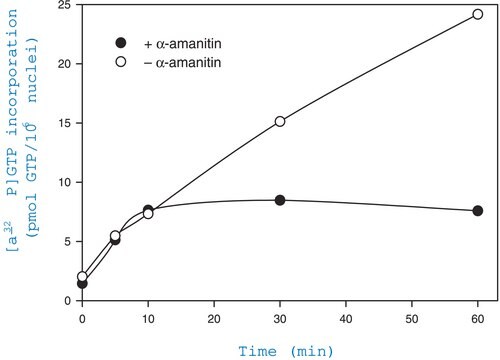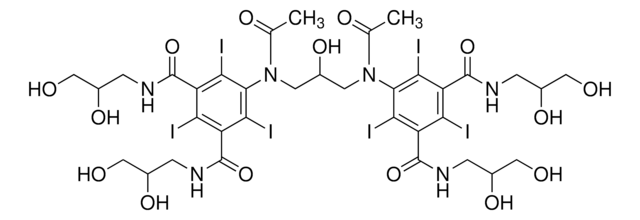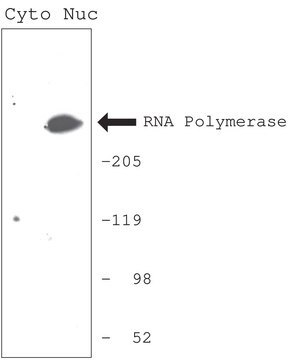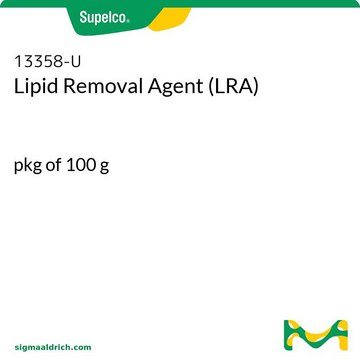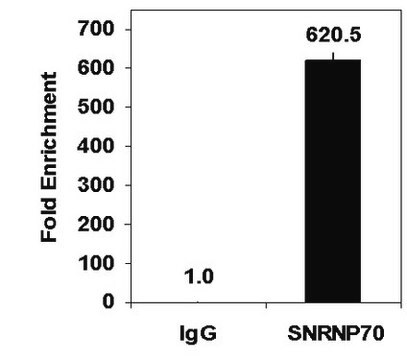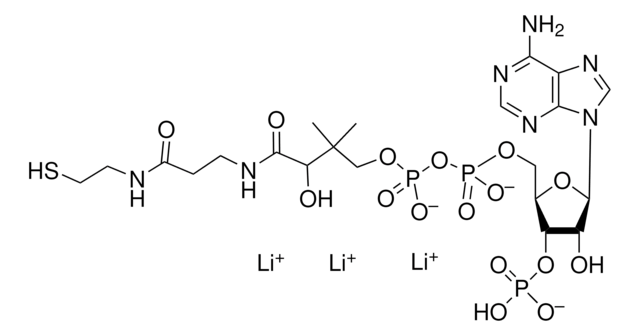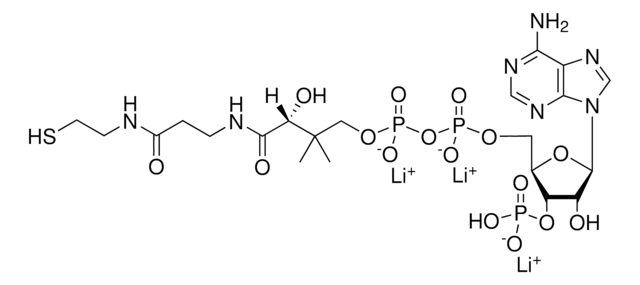17-375
EZ-Zyme™ Chromatin Prep Kit
Contains proprietary reagents optimized for the enzymatic shearing of chromatin from mammalian cells at higher resolution than sonication for use in chromatin immunoprecipitation (ChIP) assays.
Sinónimos:
Chromatin Isolation Kit
Iniciar sesiónpara Ver la Fijación de precios por contrato y de la organización
About This Item
UNSPSC Code:
12161503
eCl@ss:
32161000
NACRES:
NA.32
Productos recomendados
Quality Level
manufacturer/tradename
EZ-Zyme™
Upstate®
application(s)
sample preparation
shipped in
dry ice
General description
Chromatin Immunoprecipitation (ChIP) is a widely utilized experimental technique to monitor the association of proteins with specific DNA sequences. This technique has been used to study patterns of histone modifications and to map binding sites of various proteins on a genome-wide scale with the aid of microarray technology. ChIP has also been used to determine the temporal regulation underlying the occupation of the particular chromatin locus by multiple proteins. In addition, because formaldehyde efficiently crosslinks protein to DNA as well as protein to protein, this method can, in principle, detect proteins that bind DNA directly as well as those that bind DNA indirectly through other factors.
When performing ChIP, chromatin from cells and tissues needs to be fragmented so that it becomes soluble and resolution can be achieved in detecting protein-DNA interaction at specific loci. Sonication is a common method for producing sheared chromatin. Although this method is very efficient in releasing chromatin into the solution, it has a number of limitations. For example, foaming and overheating associated with sonication can result in protein denaturation or incomplete chromatin fragmentation. Also, sonication conditions can be physically harsh and can negatively impact immunoprecipitation efficiency. These and other limitations in the procedure can make sample sonication difficult to optimize and perform reproducibly.
The EZ-Zyme Chromatin Prep kit allows ChIP analysis at nucleosome resolution by performing complete or partial digestions with a proprietary enzymatic cocktail to obtain chromatin fragments of on average one to a few nucleosomes in length. Compared to sonication, this procedure not only allows mapping the protein-DNA association at a higher resolution, but also renders the subsequent immunoprecipitation more efficient due to its mild digestion condition. In addition, enzymatic shearing is compatible with non-crosslinked ChIP (native ChIP), which allows analysis of histone modifications not only on cultured cells, but also on freshly dissected and frozen tissues.
Use:
The EZ-Zyme kit contains reagents optimized for generating enzymatically processed chromatin from mammalian cells for use in chromatin immunoprecipitation. While the kit contains a full complement of buffers required for chromatin shearing, careful attention must be paid to the details of the instructions. Follow all the instructions carefully, especially with regard to incubation times and temperatures.
When performing ChIP, chromatin from cells and tissues needs to be fragmented so that it becomes soluble and resolution can be achieved in detecting protein-DNA interaction at specific loci. Sonication is a common method for producing sheared chromatin. Although this method is very efficient in releasing chromatin into the solution, it has a number of limitations. For example, foaming and overheating associated with sonication can result in protein denaturation or incomplete chromatin fragmentation. Also, sonication conditions can be physically harsh and can negatively impact immunoprecipitation efficiency. These and other limitations in the procedure can make sample sonication difficult to optimize and perform reproducibly.
The EZ-Zyme Chromatin Prep kit allows ChIP analysis at nucleosome resolution by performing complete or partial digestions with a proprietary enzymatic cocktail to obtain chromatin fragments of on average one to a few nucleosomes in length. Compared to sonication, this procedure not only allows mapping the protein-DNA association at a higher resolution, but also renders the subsequent immunoprecipitation more efficient due to its mild digestion condition. In addition, enzymatic shearing is compatible with non-crosslinked ChIP (native ChIP), which allows analysis of histone modifications not only on cultured cells, but also on freshly dissected and frozen tissues.
Use:
The EZ-Zyme kit contains reagents optimized for generating enzymatically processed chromatin from mammalian cells for use in chromatin immunoprecipitation. While the kit contains a full complement of buffers required for chromatin shearing, careful attention must be paid to the details of the instructions. Follow all the instructions carefully, especially with regard to incubation times and temperatures.
Packaging
Sufficient reagents for 22 enzymatic chromatin preparations
Components
Store at 4°C:
0.5M EDTA, Catalog # 20-158. One vial containing 250 μL of 0.5M EDTA, pH 8.0.
5M NaCl, Catalog # 20-159. One vial containing 500 μL of 5M NaCl.
1M Tris-HCl, pH 6.5, Catalog # 20-160. One vial containing 500 μL of 1M Tris-HCl, pH 6.5.
10X Glycine, Catalog # 20-282. One vial containing 11 mL of 1.25M Glycine.
10X PBS, Catalog # 20-281. One vial containing 24 mL of 10X PBS.
EZ-Zyme Lysis Buffer, Catalog # 20-312. One vial containing 2.0 mL of EZ-Zyme Lysis Buffer.
EZ-Zyme Digestion Buffer, Catalog # 20-313. One vial containing 1.65 mL of EZ-Zyme Digestion Buffer.
EZ-Zyme Stop Buffer, Catalog # 20-315. One vial containing 1.65 mL of EZ-Zyme Stop Buffer
Store at -20°C:
Protease Inhibitor Cocktail II, Catalog # 20-283. One vial containing 110 μL of Protease Inhibitor Cocktail II in DMSO.
RNase A, Catalog # 20-297. One vial containing 600 μg of RNase A in 60 μL sterile water.
Proteinase K, Catalog # 20-298. One vial containing 600 μg of Proteinase K in 60 μL of 50mM Tris-HCl, pH 8.0, 10mM CaCl2.
EZ-Zyme Enzymatic Cocktail, Catalog # 20-314. One vial containing 76U of Enzymatic Cocktail in 38 μL of a solution containing 50% glycerol.
0.5M EDTA, Catalog # 20-158. One vial containing 250 μL of 0.5M EDTA, pH 8.0.
5M NaCl, Catalog # 20-159. One vial containing 500 μL of 5M NaCl.
1M Tris-HCl, pH 6.5, Catalog # 20-160. One vial containing 500 μL of 1M Tris-HCl, pH 6.5.
10X Glycine, Catalog # 20-282. One vial containing 11 mL of 1.25M Glycine.
10X PBS, Catalog # 20-281. One vial containing 24 mL of 10X PBS.
EZ-Zyme Lysis Buffer, Catalog # 20-312. One vial containing 2.0 mL of EZ-Zyme Lysis Buffer.
EZ-Zyme Digestion Buffer, Catalog # 20-313. One vial containing 1.65 mL of EZ-Zyme Digestion Buffer.
EZ-Zyme Stop Buffer, Catalog # 20-315. One vial containing 1.65 mL of EZ-Zyme Stop Buffer
Store at -20°C:
Protease Inhibitor Cocktail II, Catalog # 20-283. One vial containing 110 μL of Protease Inhibitor Cocktail II in DMSO.
RNase A, Catalog # 20-297. One vial containing 600 μg of RNase A in 60 μL sterile water.
Proteinase K, Catalog # 20-298. One vial containing 600 μg of Proteinase K in 60 μL of 50mM Tris-HCl, pH 8.0, 10mM CaCl2.
EZ-Zyme Enzymatic Cocktail, Catalog # 20-314. One vial containing 76U of Enzymatic Cocktail in 38 μL of a solution containing 50% glycerol.
Storage and Stability
Upon receipt, store components at the temperatures indicated on the labels. Storage temperatures are also indicated on page 3 of this manual. Kit components are stable for 6 months from date of shipment when stored as directed.
Legal Information
EZ-Zyme is a trademark of Miltex Instrument Company, Inc.
UPSTATE is a registered trademark of Merck KGaA, Darmstadt, Germany
Disclaimer
Unless otherwise stated in our catalog or other company documentation accompanying the product(s), our products are intended for research use only and are not to be used for any other purpose, which includes but is not limited to, unauthorized commercial uses, in vitro diagnostic uses, ex vivo or in vivo therapeutic uses or any type of consumption or application to humans or animals.
signalword
Danger
hcodes
Hazard Classifications
Aquatic Chronic 3 - Eye Irrit. 2 - Resp. Sens. 1 - Skin Irrit. 2
Storage Class
10 - Combustible liquids
Certificados de análisis (COA)
Busque Certificados de análisis (COA) introduciendo el número de lote del producto. Los números de lote se encuentran en la etiqueta del producto después de las palabras «Lot» o «Batch»
¿Ya tiene este producto?
Encuentre la documentación para los productos que ha comprado recientemente en la Biblioteca de documentos.
Transposon-mediated rewiring of gene regulatory networks contributed to the evolution of pregnancy in mammals.
Lynch, VJ; Leclerc, RD; May, G; Wagner, GP
Nature Genetics null
Defect of adaptation to hypoxia in patients with COPD due to reduction of histone deacetylase 7.
To, M; Yamamura, S; Akashi, K; Charron, CE; Haruki, K; Barnes, PJ; Ito, K
Chest null
Hyo-Jeong Lee et al.
Evidence-based complementary and alternative medicine : eCAM, 2012, 390957-390957 (2012-12-18)
Although cryptotanshinone (CT) was known to exert antitumor activity in several cancers, its molecular mechanism under hypoxia still remains unclear. Here, the roles of AEG-1 and HIF-1α in CT-induced antitumor activity were investigated in hypoxic PC-3 cells. CT exerted cytotoxicity
Peroxisome proliferator-activated receptor alpha protects renal tubular cells from gentamicin-induced apoptosis via upregulating Na+/H+ exchanger NHE1.
Chen, CH; Chen, TH; Wu, MY; Chen, JR; Tsai, HF; Hong, LY; Zheng, CM; Chiu, IJ; Lin, YF; Hsu, YH
Molecular Medicine null
Piwil2 suppresses p53 by inducing phosphorylation of signal transducer and activator of transcription 3 in tumor cells.
Lu, Y; Zhang, K; Li, C; Yao, Y; Tao, D; Liu, Y; Zhang, S; Ma, Y
Testing null
Nuestro equipo de científicos tiene experiencia en todas las áreas de investigación: Ciencias de la vida, Ciencia de los materiales, Síntesis química, Cromatografía, Analítica y muchas otras.
Póngase en contacto con el Servicio técnico